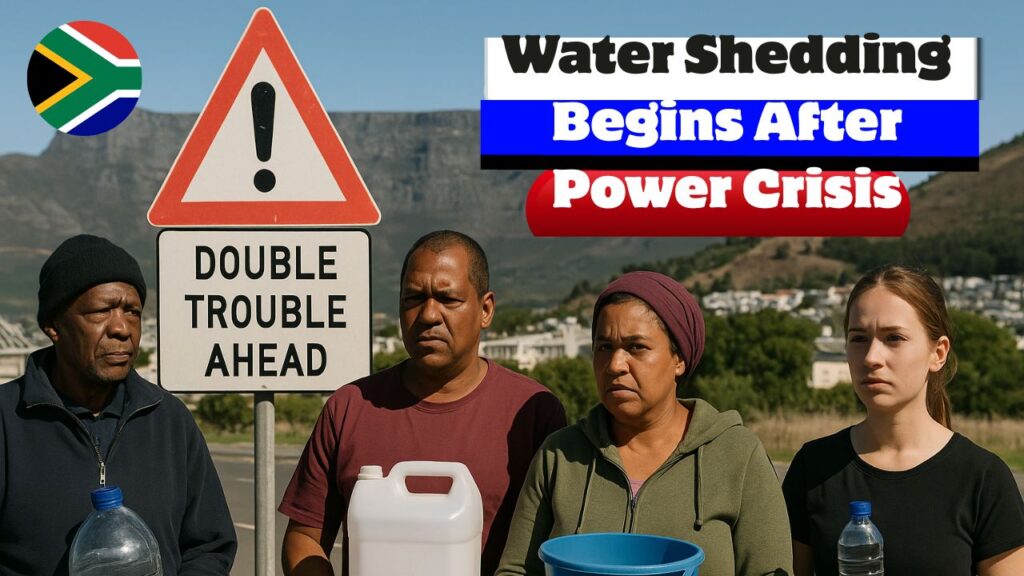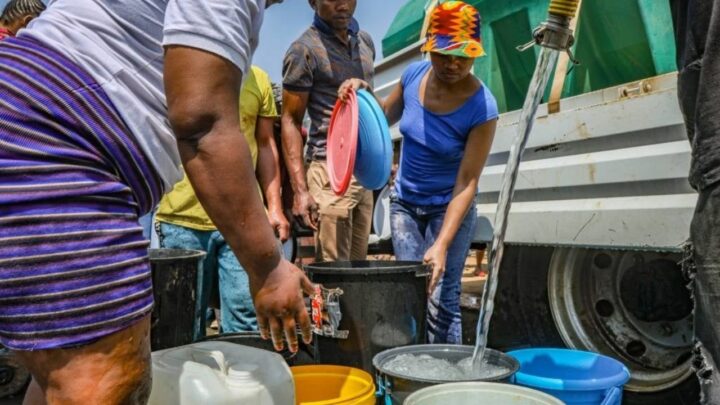South Africans are facing another crisis just as they were beginning to recover from relentless power cuts. After months of Stage 6 load shedding disrupting homes and businesses, a new threat has emerged — water shedding. Due to severe drought conditions, aging infrastructure, and power supply interruptions affecting pumping stations, many regions across South Africa could soon experience scheduled water outages. The government and local municipalities are now implementing emergency water management plans to prevent complete shortages. Here’s everything South Africans should know about this growing water crisis.

South African Municipalities Brace for Water Shedding
Major municipalities across South Africa, including Johannesburg, Durban, and Cape Town, are preparing for scheduled water cuts in response to low reservoir levels and ongoing electricity disruptions. Officials have warned that water pumping stations rely heavily on stable electricity supply, meaning load shedding directly affects water distribution. To maintain essential services, certain zones may face daily water restrictions lasting several hours. The Department of Water and Sanitation has urged residents to store water safely, fix household leaks, and use water sparingly. These measures aim to stabilize supply and avoid complete water shortages during the upcoming dry months.
Impact of Load Shedding on Water Supply Systems in South Africa
The combination of load shedding and infrastructure breakdowns has created a perfect storm for South Africa’s water system. When electricity is cut, pumps and treatment facilities cannot function properly, reducing the amount of clean water available for distribution. Many reservoirs have dropped to critically low levels, while water tankers are being deployed to highly affected communities. Municipal engineers report that older systems are more vulnerable to this double crisis. Unless urgent repairs and energy stabilization occur soon, the risk of widespread water rationing could extend into 2026, impacting both urban and rural households severely.
Read Only : SASSA Pension Grant September 2025 — Full List of Amounts, Dates & Changes
Government Measures and Citizen Response Across South Africa
In response to the looming water shedding crisis, the South African government has initiated emergency plans to restore efficiency in water infrastructure. Eskom and water boards are coordinating to ensure essential stations receive backup power during outages. Additionally, local municipalities are rolling out community-level awareness programs, encouraging citizens to harvest rainwater and reduce usage. Civil organizations have also stepped in to distribute portable water tanks to remote areas. Despite these efforts, experts believe consistent investment and better resource management are essential to prevent future water supply collapses in South Africa.
| City/Province | Expected Water Shedding Hours | Main Cause | Government Action |
|---|---|---|---|
| Johannesburg (Gauteng) | 6–8 hours/day | Power failure at pumping stations | Backup generators deployed |
| Durban (KZN) | 4–6 hours/day | Reservoir levels dropping | Tankers to supply communities |
| Cape Town (Western Cape) | 5 hours/day | Drought and demand surge | Strict water restrictions |
| Polokwane (Limpopo) | 7 hours/day | Infrastructure repair delays | New maintenance fund approved |
| Bloemfontein (Free State) | 5–7 hours/day | Low reservoir inflow | Emergency borehole drilling |

How South Africans Can Prepare for Water Shedding
Experts are advising South Africans to prepare early for water shedding just as they have for load shedding. Households should store sufficient water in clean containers, invest in small water tanks, and reuse greywater for non-essential activities like gardening or cleaning. Residents should also check local municipal notices for schedules and restrictions. Communities are encouraged to work together to assist vulnerable neighbors, especially the elderly. Businesses, schools, and hospitals are setting up contingency systems to ensure uninterrupted operations. By adopting smart conservation habits, South Africans can reduce the severity of water disruptions in the coming months.
Frequently Asked Questions (FAQs)
1. What is water shedding in South Africa?
Water shedding refers to scheduled water cuts implemented when supply systems cannot meet demand due to low reservoir levels or power failures.
2. Which cities are most affected by the current water shedding?
Johannesburg, Durban, Cape Town, and Polokwane are among the most affected cities facing water restrictions.
3. How long will the water shedding continue?
Experts predict that water shedding could last into mid-2026 unless infrastructure and electricity supply issues are resolved.
4. How can households manage during water shedding?
Store water safely, reduce daily usage, repair leaks, and follow your municipality’s water restriction schedule for updates.




